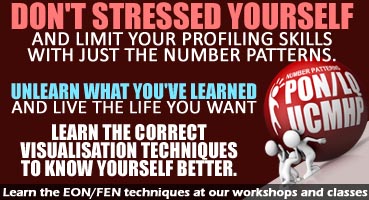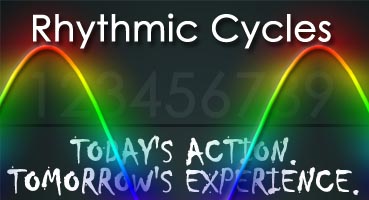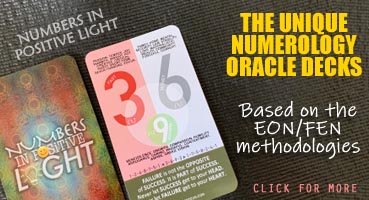No Missing Numbers – Good or Bad?
Many are perplexed when they see no missing numbers in a person’s chart. Different people have made varying observations. To some people, a chart with NO missing numbers imply the person’s life is smooth sailing. To others, it could imply little or no need to work hard to manifest the vibes since the energies in the person’s chart is already ‘harmonised’ and balanced. No one is wrong since they based their analysis through case-study observations.
 Some people are curious to know the different possibilities when they see a chart with no missing numbers – and that drives their urge to find out more. Take the case of Henson who recently send me an email, “I have come across a few profiles who do not have any missing numbers totally. Can people whose birth chart have no missing numbers mean either they are almost perfect or problems free mostly. Do these people usually have perfect lifestyle? Do they faced different problems than those with missing numbers? I do not know how to explain to those who have no missing numbers regarding this situation. Your insightful advice and guidance will be most needed.”
Some people are curious to know the different possibilities when they see a chart with no missing numbers – and that drives their urge to find out more. Take the case of Henson who recently send me an email, “I have come across a few profiles who do not have any missing numbers totally. Can people whose birth chart have no missing numbers mean either they are almost perfect or problems free mostly. Do these people usually have perfect lifestyle? Do they faced different problems than those with missing numbers? I do not know how to explain to those who have no missing numbers regarding this situation. Your insightful advice and guidance will be most needed.”
People with no missing numbers in their chart usually have slightly better luck than people with one or more missing numbers in their charts. If missing numbers imply imbalanced energies in a person’s chart, then no missing numbers means harmonised energies creating balanced and perfect vibes. In theory, many of these people have the perfect life path already paved for them. In reality, life is not always like a bed full of beautiful roses. Though their life path are often more straightforward and smooth sailing, these people still occasionally experience peaks and valleys moments in their life journey.
Here’s a simple analogy. Imagine their life journey to be like driving along a long straight road, with the “peaks and valleys” like potholes on the roads, road signs, speed bumps, and jaywalkers suddenly dashing across your path. Depending on the numbers present in a person’s chart, the travelling experience along the straight road varies among people with no missing numbers. These people might experience different life journeys, like driving along:
- Long straight road like on a fast highway or expressway for hours.
- Long straight road in the remote countryside for hours.
- Long straight road along the town city with frequent stoppages due to traffic lights turning red, jaywalkers dashing across, distracting honking and sudden brakes, and drivers swaying their cars into your path.
- Short straight road like a street where you can reach your destination faster than you’d expected.
 The analogies used, though not the best, is about the person’s life (journey) experience and their mindsets (driving attitudes). Take Type 1 people – they’re the ones who perseveres with full of relentless zest to achieve their goals fast. They are success-driven with full of motivation and inspiration, often for self-benefits. They are often self-centred, proud and egoistic. They might display the “I, Me, and Myself” attitude – with unsympathetic tendencies as they like to drive fast, am unstoppable, and oblivious to the environment and people around them. Type 2 people belong to the boring and complacent type who can be slow-minded, and don’t mind working hard and sweating out as long as they stay within their comfort zone. They dislike unplanned experiences and surprises. Type 3 people are less lucky than earlier two as their patience, emotions, and endurance are often tested. As long as they can focus attentively, they should reach their destination easily. Type 4 people might display the perfectionist trait. They are usually the luckiest ones who can achieve instant success (reaching their destination) with little or slight effort.
The analogies used, though not the best, is about the person’s life (journey) experience and their mindsets (driving attitudes). Take Type 1 people – they’re the ones who perseveres with full of relentless zest to achieve their goals fast. They are success-driven with full of motivation and inspiration, often for self-benefits. They are often self-centred, proud and egoistic. They might display the “I, Me, and Myself” attitude – with unsympathetic tendencies as they like to drive fast, am unstoppable, and oblivious to the environment and people around them. Type 2 people belong to the boring and complacent type who can be slow-minded, and don’t mind working hard and sweating out as long as they stay within their comfort zone. They dislike unplanned experiences and surprises. Type 3 people are less lucky than earlier two as their patience, emotions, and endurance are often tested. As long as they can focus attentively, they should reach their destination easily. Type 4 people might display the perfectionist trait. They are usually the luckiest ones who can achieve instant success (reaching their destination) with little or slight effort.
 Let’s look at Sandy’s and Anson’s charts. At first glance, they have almost similar patterns in their birth charts. They might not face similar experiences before as their self-beliefs and habits developed over the years which influenced their behaviours, attitudes, and actions. They don’t have missing numbers, and there is little need for them to work hard to travel along their life paths towards the many destinations in life.
Let’s look at Sandy’s and Anson’s charts. At first glance, they have almost similar patterns in their birth charts. They might not face similar experiences before as their self-beliefs and habits developed over the years which influenced their behaviours, attitudes, and actions. They don’t have missing numbers, and there is little need for them to work hard to travel along their life paths towards the many destinations in life.
Chances are, what I’ve mentioned might be different in real-life.
 Learning the Elements of Numbers (EON) methods is not just about identifying missing numbers and drawing our observations from there. We cannot just look at the flower in the picture and assume it’s a nice painting. A beautiful or dying flower only depicts one subjective aspect of the entire painting. We need to view the entire painting, sometimes including the canvas material and picture frames used. Hopefully, we can understand the mood, feelings and emotions of the painter, and the underlying reasons behind the objective and intent of the painting. Similarly, we have to look at both Sandy’s and Anson’s chart to profile them better.
Learning the Elements of Numbers (EON) methods is not just about identifying missing numbers and drawing our observations from there. We cannot just look at the flower in the picture and assume it’s a nice painting. A beautiful or dying flower only depicts one subjective aspect of the entire painting. We need to view the entire painting, sometimes including the canvas material and picture frames used. Hopefully, we can understand the mood, feelings and emotions of the painter, and the underlying reasons behind the objective and intent of the painting. Similarly, we have to look at both Sandy’s and Anson’s chart to profile them better.
Sandy and Anson have the charismatic, charms, sociable, and presentable traits. One is using her feminine and sex appeal to achieve her goals. The other is using his charming and soft-spoken nature to drive others crazy into obliging him with his goals. Though the manipulative and pretentious tendencies are strong, they still have to work harder on their communication skills with others. They need to be more tactful, empathetic, truthful, and credible.
 Having a perfect life and one without problems for a person with no missing numbers is just fiction. You may be a good defensive driver but the car you drive, and the car’s performance and upkeep can affect your travelling experience. Equally, the energies coming from the periodic cycles (Personal Year. Personal Month, Rhythmic Cycles) can affect you. When you’re with someone, your ‘relationship’ vibes change and it can affect both of you. The road ahead might not be safe. There could be oil spills on the road, the drizzle may suddenly turn to torrential downpour, the clear blue-sky could turn dark with thunderous sound and frightening lightning’s. When you are unprepared, you will blame your journey on others. But when you know you chart and learn to control your tempers and change to a better person, your mood and mindset changes. And the quality of your journey experience would be different because you have taken precautions earlier and are prepared to drive your car carefully and face the perfect storm ahead.
Having a perfect life and one without problems for a person with no missing numbers is just fiction. You may be a good defensive driver but the car you drive, and the car’s performance and upkeep can affect your travelling experience. Equally, the energies coming from the periodic cycles (Personal Year. Personal Month, Rhythmic Cycles) can affect you. When you’re with someone, your ‘relationship’ vibes change and it can affect both of you. The road ahead might not be safe. There could be oil spills on the road, the drizzle may suddenly turn to torrential downpour, the clear blue-sky could turn dark with thunderous sound and frightening lightning’s. When you are unprepared, you will blame your journey on others. But when you know you chart and learn to control your tempers and change to a better person, your mood and mindset changes. And the quality of your journey experience would be different because you have taken precautions earlier and are prepared to drive your car carefully and face the perfect storm ahead.
 I’ve completed new visualisation slides this week on the “MICE Effect” to explain the types of life path different people may experience. I’m excited as I can explain how we can apply the knowledge to look at a chart with missing or no-missing numbers. I’ll sharing more information to the FEN Level 2 (Advanced) students at tomorrow’s Day 2 session (Saturday, 16/5/2015).
I’ve completed new visualisation slides this week on the “MICE Effect” to explain the types of life path different people may experience. I’m excited as I can explain how we can apply the knowledge to look at a chart with missing or no-missing numbers. I’ll sharing more information to the FEN Level 2 (Advanced) students at tomorrow’s Day 2 session (Saturday, 16/5/2015).
The life purpose and perspective of a person can influence their behaviour and actions, and their eventual outcome. Students will learn to understand the probable life path routes from a person’s chart, and then apply relevant remedial actions to achieve a better quality and purposeful lifestyle.
Regards, Ron WZ Sun















